Forex spot trading is the exchange of one currency for another at its current market price, known as the spot price. This type of trade is settled immediately or “on the spot” via over-the-counter (OTC) through brokers or Electronic Communication Networks (ECNs), as there are no centralized exchanges for spot forex. This direct trading method lets participants such as retail traders, institutional investors, banks, and liquidity providers to act quickly on currency fluctuations driven by economic data, geopolitical events, or market sentiment.
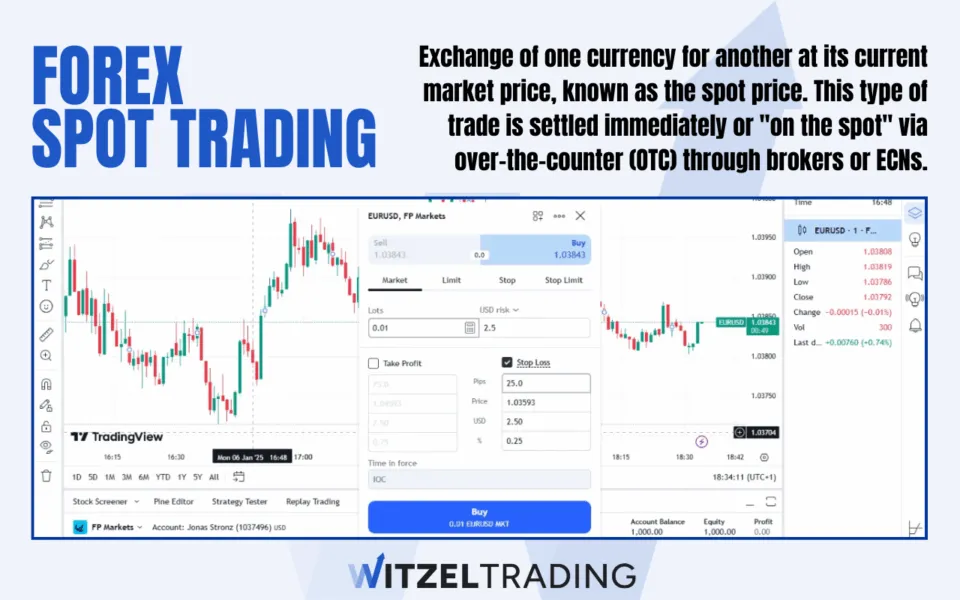
Key Facts About Forex Spot Trading:
- Instant Trade Execution: Spot trades are executed immediately, while actual currency settlement occurs within two business days, seamlessly managed by brokers.
- High Liquidity: With over $7.5 trillion traded daily, the forex spot market offers exceptional liquidity, ensuring fast execution and minimal slippage even during high volatility.
- No Contracts or Expiry: Spot trading has no fixed contracts or expiration dates, providing complete flexibility in trade sizes and timing.
- Diverse Market Participation: Participants range from individual retail traders to multinational corporations, all accessing the market through brokers and financial institutions.
- Currency Pair Flexibility: Traders can choose from a wide variety of currency pairs allowing for diversified strategies across different market conditions.
How Is the Forex Spot Market Created in Detail?
The forex spot market functions through a decentralized system, connecting participants from around the globe without relying on a central exchange. It’s not bound by physical infrastructure; instead, it operates through an extensive electronic network of banks, brokers, financial institutions, and traders.
Market Makers and Liquidity
Market makers such as banks and financial institutions ensure trades can happen at any moment. They provide continuous bid (buy) and ask (sell) prices for currency pairs, effectively creating liquidity. When you place a trade, these market makers step in to either buy or sell the currency you’re trading.
Let’s say you buy EUR/USD. A market maker simultaneously sells the equivalent amount, ensuring the trade is completed immediately at the agreed price. This seamless process is critical for a market that handles trillions of dollars in volume daily.
Price Discovery Through Real-Time Dynamics
The price of any currency pair in the spot market is determined by supply and demand. A surge in demand for a currency due to an interest rate hike or positive economic data, will push its price higher. Conversely, political instability or weak economic indicators can drive demand away, causing the price to drop.
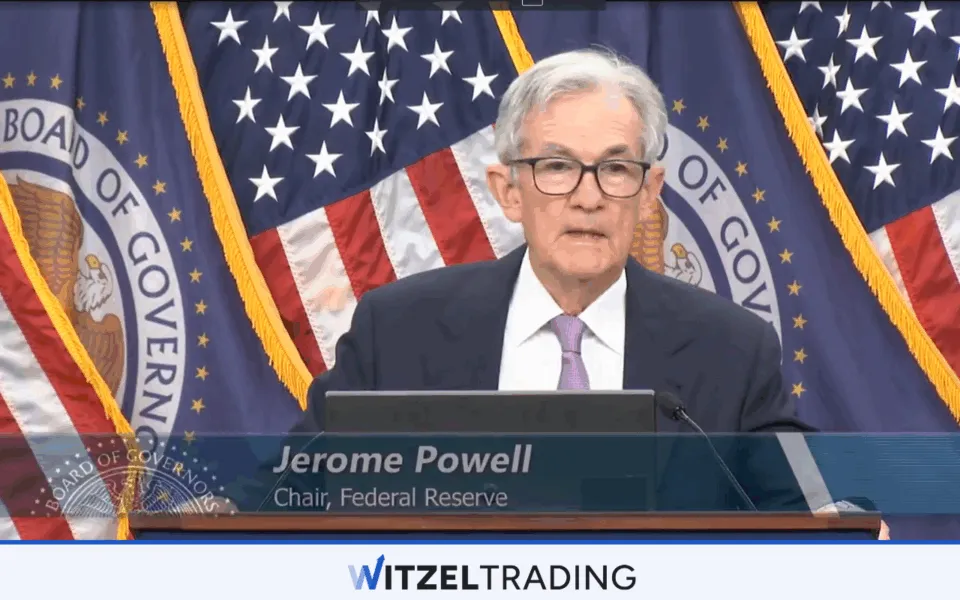
Take an example: if the U.S. Federal Reserve signals an interest rate increase, investors flock to the USD, expecting better returns. As demand spikes, the USD strengthens, and the EUR/USD spot price adjusts accordingly, often within seconds. This immediate reflection of global events is one reason the spot market is so dynamic and attractive to traders.
Decentralized Yet Fully Interconnected
The forex spot market operates through a 24-hour cycle, starting in the Asia-Pacific trading session and moving through Europe and North America. Despite its lack of a central exchange, the market remains highly coordinated. Advanced electronic communication networks (ECNs) link participants, ensuring prices are synchronized and trades are executed efficiently across time zones.
This structure allows the market to stay active and reactive—there’s no downtime. A key policy decision in Tokyo can ripple through the market long before traders in London wake up.
What Is a Spot Price?
The spot price is the current exchange rate at which one currency can be exchanged for another. It’s the real-time value determined by the immediate buying and selling activity in the forex spot market. When you see the EUR/USD quoted at 1.05, that’s the spot price—what you would pay or receive to exchange euros for dollars at that precise moment.
What Are Important Key Features When Trading Spot FX?
Spot Forex Trading demands a deep understanding of its mechanics to succeed long-term. Key features like transaction costs, volatility management, and market psychology are critical for making informed and effective trading decisions.
Economic Events and Their Immediate Impact
The forex spot market is highly sensitive to economic data releases and geopolitical events. Reports such as payroll figures, interest rate decisions, or inflation data can create sharp movements in currency prices. Spot FX traders position themselves ahead of these announcements or react immediately after.
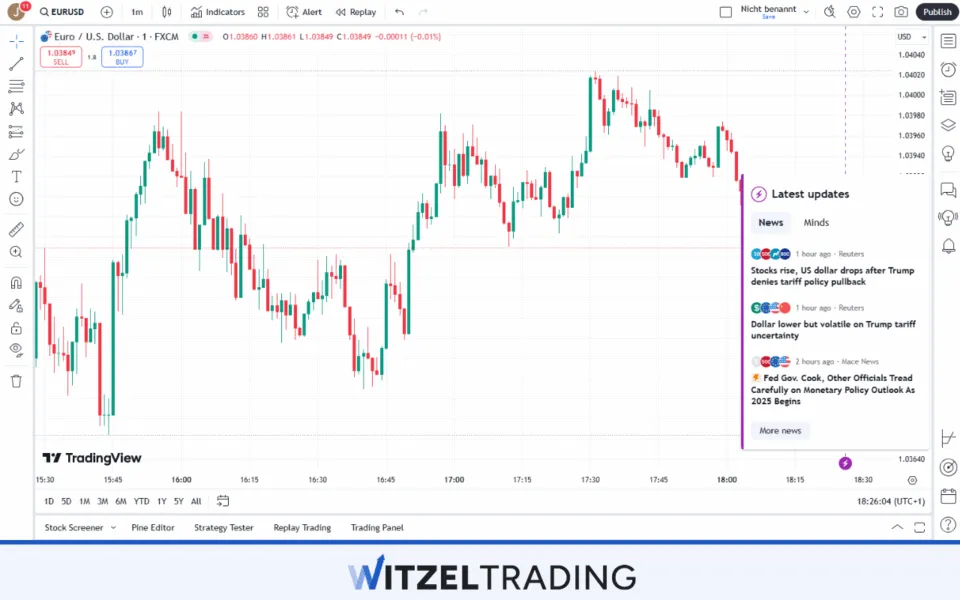
Traders rely on economic calendars and news feeds to stay informed in real time. Ignoring these events can leave traders exposed to unexpected volatility, while leveraging them effectively can yield significant opportunities.
Understanding Currency Correlations
Currencies do not move in isolation. Many pairs are interconnected due to trade relationships, commodity dependencies, or broader macroeconomic trends. For example:
- AUD/USD and Commodities: Australia’s economy relies heavily on exporting raw materials like iron ore and gold. Rising commodity prices increase Australian export revenues, boosting the AUD and strengthening the AUD/USD pair. When commodity prices fall, demand for the AUD weakens, causing the pair to drop.
- EUR/USD and USD/CHF: EUR/USD and USD/CHF often move inversely due to the Swiss franc’s safe-haven status. During times of uncertainty, the franc strengthens, pushing USD/CHF lower, while the euro may weaken as investors avoid risk, affecting EUR/USD. In less risky periods, the dollar strengthens, reversing these trends.
Therefore, recognizing these correlations is an important skill for spot traders, as it allows them to anticipate movements across related currency pairs. This knowledge opens up trading opportunities but also enables more precise hedging to manage risk effectively.
Spreads and Costs
While forex spot trading is known for its cost efficiency, transaction costs still play a pivotal role. The spread (the difference between the bid and ask price) determines how much a trader pays to enter a trade. Selecting a broker with competitive spreads and minimal hidden fees can significantly impact profitability over time. Many brokers also offer variable spreads, which widen during periods of high volatility or low liquidity, such as major news releases or market closures.
Volatility
Volatility is where spot FX traders can make a lot of profit, but it’s also where unprepared traders lose control. Managing volatility requires the disciplined use of tools that mitigate risk:
- Stop-Loss Orders: These limit losses by automatically closing a trade once a predetermined price is reached. For example, if you long EUR/USD at 1.0500 and set a stop-loss at 1.0450, your maximum loss is capped at 50 pips. This ensures that adverse price movements don’t spiral into excessive losses.
- Position Sizing: Controlling the size of each trade relative to your account balance and the market’s volatility is essential. During periods of heightened volatility, reducing position sizes minimizes exposure to sudden price swings, helping preserve your capital.
- Leveraging Market Psychology: Volatility amplifies emotional decision-making among traders, leading to predictable patterns in market behavior. Fear often causes traders to exit trades prematurely, while greed pushes others into impulsive positions. Disciplined traders can take advantage of overreaction by entering after a panic-driven sell-off or positioning for corrections after price spikes. This allows for better trade entries with improved risk-to-reward ratios.
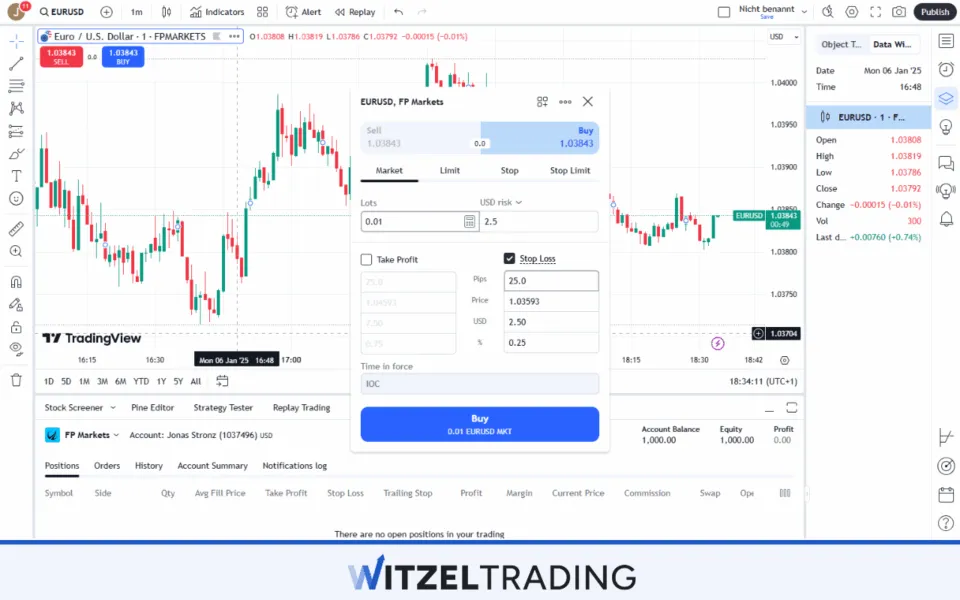
Importance of Broker Selection in Spot FX Trading
The broker you select directly influences your ability to trade efficiently in the forex spot market. Forex Brokers like FP Markets, BlackBull Markets, and Vantage Markets are known for offering tight spreads, fast execution, and regulated trading environments, all of which are critical for maintaining an edge in a highly competitive market.
Your broker determines the tools and resources you’ll have access to, such as advanced charting platforms, market analysis, and risk management features. These tools can impact your ability to make informed decisions and execute trades effectively, especially in a market as fast-moving as spot forex.
FX Spot Market vs Forex Futures
The FX spot market and forex futures differ fundamentally in how they operate. In the spot market, trades involve the direct exchange of currencies at the prevailing market price, with settlement occurring instantly on-screen. This immediacy makes the spot market ideal for traders who focus on short-term price movements or need to facilitate international transactions.
On the other hand, forex futures are standardized contracts that commit to buying or selling a currency at a set price on a specific future date. These contracts are primarily used for hedging long-term exposure or speculating on future price changes under more structured conditions.
Moreover, spot trading is decentralized, offering traders the freedom to customize trade sizes and choose from a wide range of currency pairs, making it ideal for retail traders. Forex Futures, in contrast, are traded on centralized exchanges with fixed contract sizes and expiration dates, which adds predictability but limits flexibility. The pricing mechanisms also differ: spot prices reflect real-time supply and demand, while futures prices are influenced by expectations of interest rate changes and time until contract maturity.
| Feature | FX Spot Market | Forex Futures |
|---|---|---|
| Settlement | T+2 (two business days) | At a future date per the contract |
| Flexibility | Fully customizable trade sizes | Standardized contract sizes |
| Market Structure | Decentralized (over-the-counter) | Centralized exchanges |
| Pricing | Real-time supply and demand drive pricing | Derived from spot prices adjusted for interest rates |
| Costs | Primarily spread-based | Includes commissions, exchange fees, and spreads |
| Leverage | High leverage, up to 1:3000, depending on the broker | Lower leverage due to exchange margin rules |
| Regulation | Regulated at the broker level across jurisdictions | Strictly regulated through centralized exchanges |
| Risk and Reward | Potential for rapid gains due to high leverage | Structured risk limits due to contract rules |
| Contract Expiry | No expiration; trades are settled directly | Contracts have set expiration dates |
| Daily Price Limits | No enforced daily price limits | Futures often have daily price limits to control volatility |
How to Trade FX Spot
Trading FX spot is a straightforward process that involves multiple steps, including selecting a broker, analyzing the market, and executing trades with proper risk management. Here’s how to get started:
Step 1: Choose a Broker
Select a reputable trading broker, such as FP Markets, Vantage Markets, or BlackBull Markets. Look for key features like competitive spreads, fast execution, and regulation to ensure a reliable trading environment. You can test the demo accounts first to get a feel for the platform before committing real funds.

Step 2: Open and Verify Your Account
Register with your chosen broker by providing personal information and verifying your identity. This step is essential to comply with regulatory requirements and secure access to the trading platform. Without completing verification you won’t get access to forex spot trading.
Step 3: Fund Your Account and Manage Your Budget
After setting up your account, deposit funds using your broker’s supported payment methods, such as bank transfer, credit card, or e-wallets. Before you trade, create a budget that aligns with your risk management strategy. Successful traders often recommend risking no more than 1–2% of your account balance per trade to protect capital during periods of volatility.
Step 4: Choose and Analyze a Currency Pair
Start by selecting a currency pair that aligns with your trading objectives. The choice should reflect your familiarity with the underlying economies and your risk tolerance. Once you’ve chosen a currency pair, conduct technical and fundamental analysis to identify trading opportunities.
Use tools like moving averages, trendlines, or Fibonacci retracements to find potential entry and exit points. Combine this with fundamental analysis by examining economic reports, central bank policies, or geopolitical events that might influence the currencies in the pair.
Step 6: Execute Your Trade with Proper Risk Management
After completing your analysis, execute your trade by determining the appropriate lot size based on your account balance and risk tolerance. Always set a stop-loss to limit your downside risk and a take-profit level to secure gains when the market moves in your favor. Use market orders for immediate execution or limit orders to enter at a predefined price, depending on your strategy. Effective risk management ensures that a single trade won’t derail your trading account.
How to Set a Limit Order
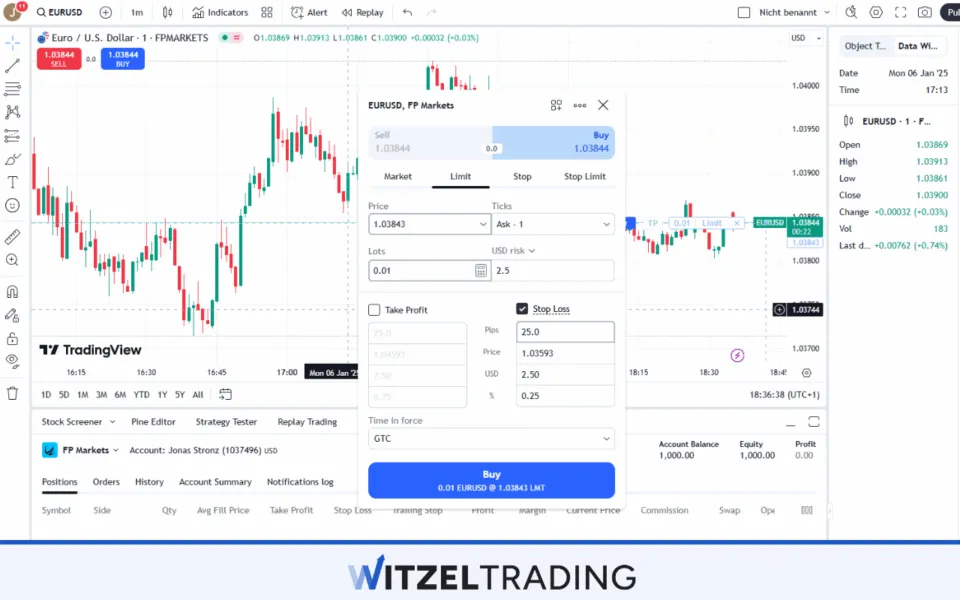
- Open the Order Panel: Navigate to your broker’s trading platform and select the currency pair you want to trade. Click on the “Order” or “New Order” option to open the order entry panel.
- Choose ‘Limit Order’ as Your Order Type: From the available order types (Market, Limit, Stop), select “Limit Order.”
- Set Your Price: Enter the specific price you want the trade to execute. This price should be based on the levels identified during your earlier technical analysis, such as support or resistance zones.
- Input the Amount to Buy or Sell: Specify the lot size for your trade. This determines how much of the currency you’re buying or selling, such as 0.1 lots (10,000 units) or 1 lot (100,000 units).
- Set the Order Duration: Choose how long the order should remain active. Options include “Good Till Cancelled” (remains open indefinitely) or “Day Order” (expires at the end of the trading day).
- Review and Confirm: Double-check all the details, including price, lot size, and risk parameters, then confirm the order. The order will remain pending until the market price reaches your specified level.
Learn Forex Trading With WR Trading
The WR Trading course takes a unique approach to teaching, focusing on high-risk-reward ratio (RRR) strategies, where trades aim for ratios like 1:5 or even 1:10. This means traders can achieve significant gains without requiring a high win rate, as profits from successful trades far outweigh occasional losses. The course emphasizes only the best markets and opportunities, eliminating unnecessary distractions that other courses focus on.
WR Trading’s structured program includes three key modules: Important Basics, Profitable Strategy, and Advanced Methods. This progression provides traders with foundational knowledge, transitions them into live trading with proven strategies, and refines their techniques using advanced tools such as level-2 data and market timing.
Unlike traditional, overwhelming trading courses, WR Trading is streamlined to maximize efficiency, requiring only 1–3 hours of daily effort. Moreover, it emphasizes critical skills such as knowing when not to trade, reducing unnecessary risk, and developing the discipline to succeed consistently.
Conclusion
Forex spot trading provides a direct way to capitalize on currency price movements, combining simplicity with real-time opportunities. While the market is accessible, success depends on disciplined risk management, sound strategies, and continuous improvement. Therefore, joining a course like WR Trading may accelerate the learning process and provide useful insights into the forex market.
Frequently Asked Questions on Forex Spot Trading
What Is Forex Spot Trading?
Forex spot trading is the process of buying and selling currencies at the current market price, with settlement occurring within two business days. It is the most direct way to trade in the forex market, focusing on real-time price fluctuations. Traders aim to profit from these movements without engaging in standardized contracts or derivatives.
What Are the Most Traded Currency Pairs in the Spot Market?
Major currency pairs like EUR/USD, USD/JPY, and GBP/USD dominate spot trading due to their high liquidity and tight spreads. Cross-currency pairs such as EUR/GBP are also popular for diversification. Exotic pairs, including USD/ZAR or USD/TRY, offer higher volatility but come with increased costs and risks.
How Can Beginners Get Started With Forex Spot Trading?
Beginners should start by selecting a reputable broker and practicing with a demo account. Understanding market fundamentals, practicing technical analysis, and developing a risk management plan are important before transitioning to live trading.
What Strategies Work Best in Forex Spot Trading?
Popular strategies include scalping, day trading, and swing trading. Scalping focuses on capturing small price movements over minutes, while day trading aims for intraday trends. Swing trading holds positions for days, targeting larger moves; all require a mix of technical and fundamental analysis.
How Does Technical Analysis Help in Forex Spot Trading?
Technical analysis helps traders identify patterns, trends, and key price levels using charts and indicators. Tools like moving averages, support and resistance levels, and candlestick patterns guide decision-making. It helps predict how the future price will move based on historical data.


